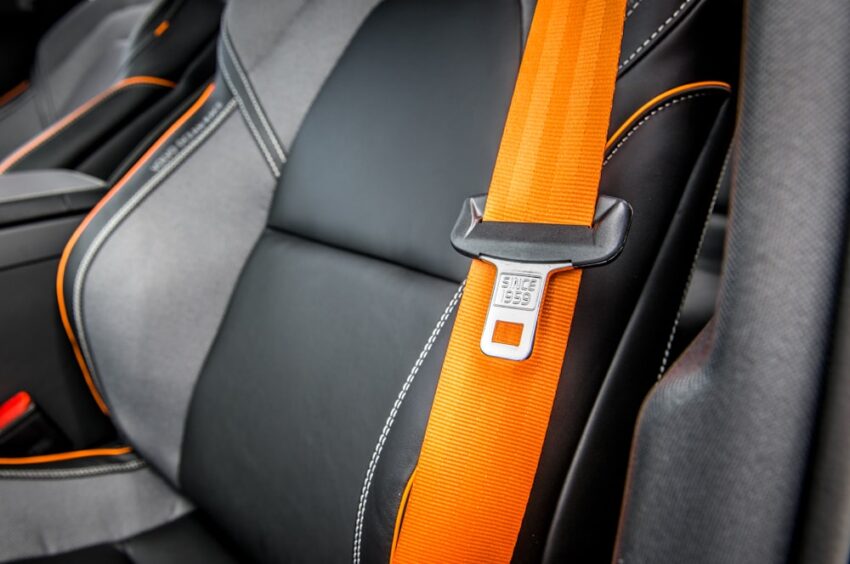Seat belts are undeniably life-saving devices. Studies consistently show they significantly reduce the risk of serious injury or death in a car accident. But what happens if you’re involved in a collision and weren’t wearing your seat belt? Does this decision impact your ability to seek compensation for damages?
This blog post will navigate the legal landscape surrounding seat belts and car accident claims, helping you understand your rights and potential consequences.
Seat Belt Laws
In most countries and states within the US, wearing a seat belt is mandatory by law for drivers and passengers occupying specific seating positions (typically front seats). This law is in place to promote safety and reduce the burden on healthcare systems after accidents. Failing to wear a seat belt can result in a traffic citation, but does it automatically disqualify you from seeking compensation after an accident?
The Seat Belt Defense
In the unfortunate event of a car accident where you weren’t wearing a seat belt and sustain injuries, the at-fault party’s insurance company might use a legal strategy called the “seat belt defense.” This defense argues that your failure to wear a seat belt contributed to the severity of your injuries. Essentially, they claim you could have mitigated your damages by buckling up.
Legal Impact of the Seat Belt Defense
According to accident attorneys in Louisville, the success of the seat belt defense varies depending on your location and the specific laws in place. Here are some potential scenarios:
- Comparative Negligence Laws: Many states follow a comparative negligence system. This means the court assigns a percentage of fault to each party involved in the accident. If the court finds you partially responsible for not wearing a seat belt, your compensation might be reduced by that percentage. For example, if you’re awarded $10,000 in damages but the court finds you 20% at fault for not wearing a seat belt, your final compensation would be $8,000.
- Modified Comparative Negligence Laws: Some states have modified comparative negligence laws, which bar recovery of damages if you’re found to be more than a certain percentage at fault (e.g., 50%). In such scenarios, not wearing a seat belt could significantly impact your ability to claim any compensation.
Beyond Comparative Negligence
The seat belt defense might not just affect the amount of compensation you receive. In some extreme cases, the defense could completely bar your claim if the court finds your failure to wear a seat belt a major contributing factor to the accident itself.
Exceptions to the Seat Belt Defense
There are some exceptions where the seat belt defense might not apply. These include:
- Medical Conditions: If you have a documented medical condition that prevents you from safely wearing a seat belt, you might have a valid defense against the seat belt defense.
- Defective Seat Belt: If the seat belt in your vehicle malfunctioned during the accident, you could argue that you weren’t negligent in not wearing a non-functional safety device.
Seeking Legal Representation
The legal nuances surrounding seat belts and car accident claims can be complex. If you’ve been injured in an accident and weren’t wearing a seat belt, it’s crucial to consult with a qualified car accident attorney. They can assess the specific laws in your jurisdiction, analyze the details of your case, and advise you on the best course of action.
Beyond Legal Implications
While this blog post focuses on the legal implications of not wearing a seat belt, it’s important to remember the human cost. Seat belts are proven to save lives and prevent serious injuries. Regardless of potential legal consequences, prioritizing your safety and the safety of others by always buckling up is the most important takeaway.
Protecting Yourself on the Road
Here are some essential tips for staying safe on the road:
- Always wear your seat belt. Make it a habit for yourself and all passengers in your vehicle.
- Ensure proper seat belt fit. The lap belt should rest snugly across your hips, and the shoulder belt should lie flat across your chest, not your neck.
- Choose the right car seat for children. Never let a child ride unrestrained in a vehicle.
- Maintain your vehicle regularly. This includes ensuring all safety features, including seat belts, are functioning correctly.
By understanding the potential legal implications of not wearing a seat belt and prioritizing your safety on the road, you can minimize risks and make informed decisions for yourself and your loved ones. Always consult with a lawyer in your area for specific legal advice regarding your situation.

